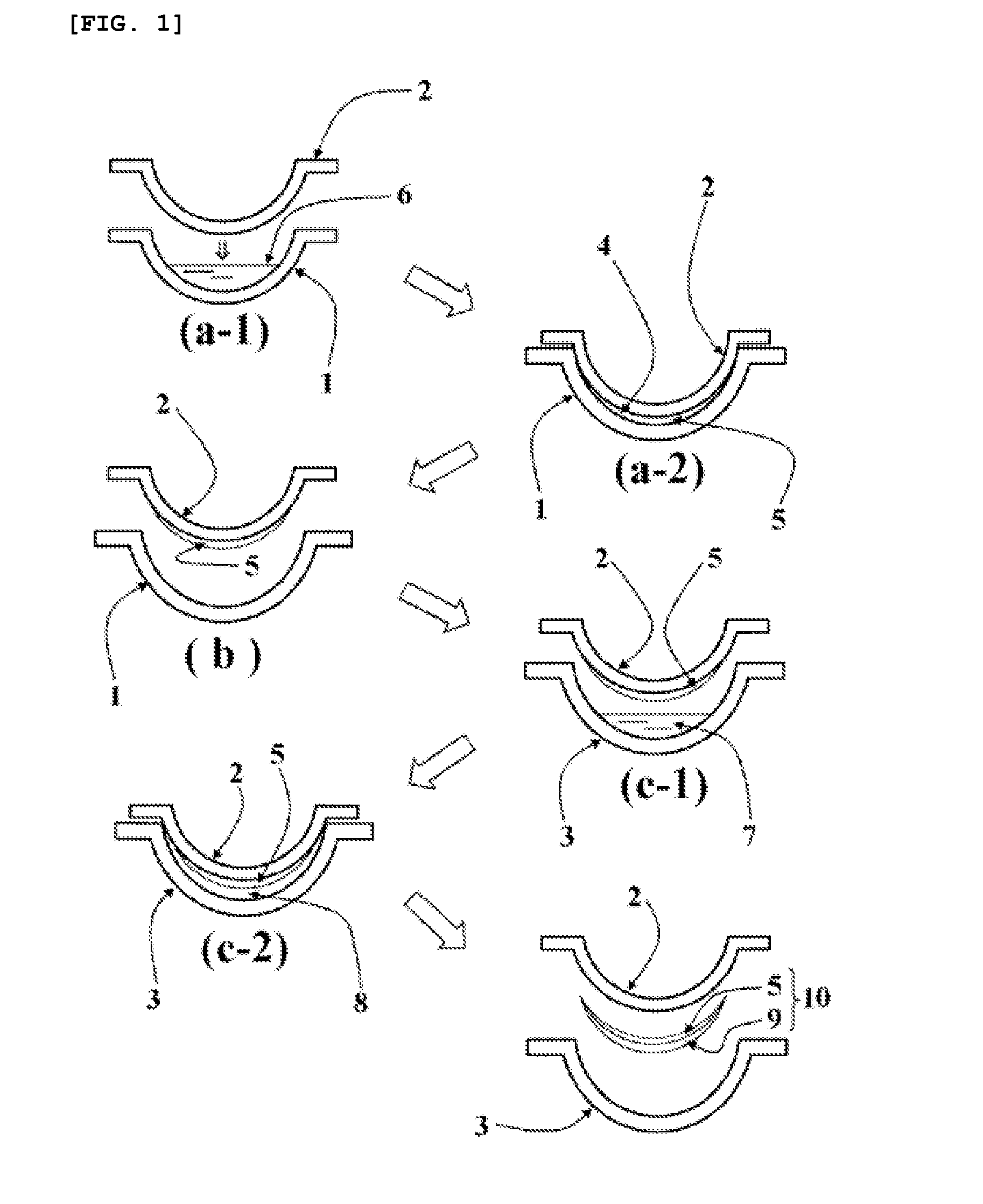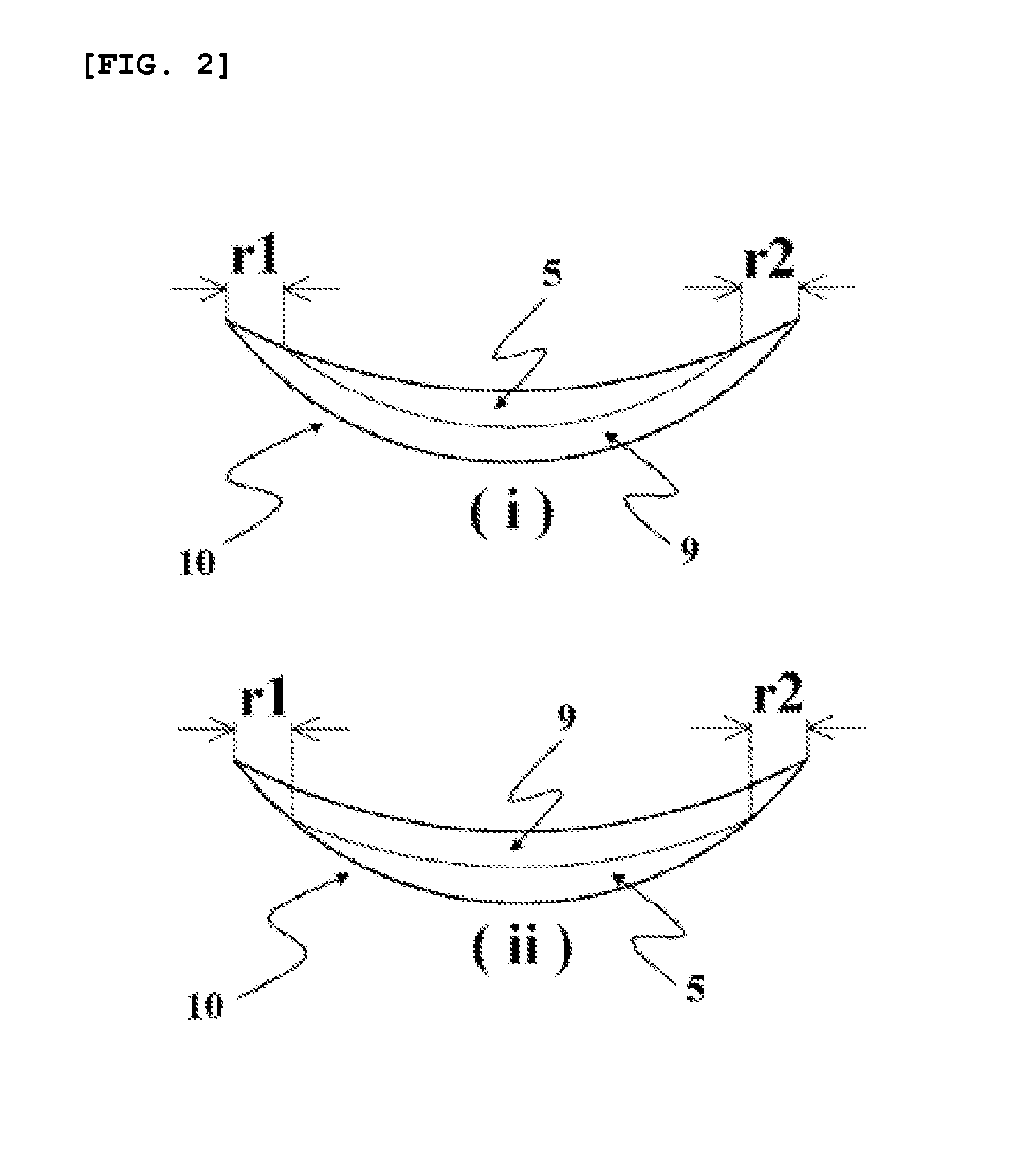Multilayer contact lens and production process therefor
a contact lens and multi-layer technology, applied in the field of manufacturing methods of contact lenses, can solve the problems of affecting the quality of contact lenses, etc., and achieves the effects of low cost, reduced deformation of contact lenses after manufacture and effective suppression of burrs
- Summary
- Abstract
- Description
- Claims
- Application Information
AI Technical Summary
Benefits of technology
Problems solved by technology
Method used
Image
Examples
example 2
[0079]The female mold (first mold) was charged with 23 μl of the first polymerizing composition (99 w / w % of 2-HEMA, 0.5 w / w % of EDMA, 0.5 w / w % of HMPP). A male mold (second mold) treated with plasma surface treatment was joined with the female mold (first mold), and then the joined molds were irradiated with light (365 nm, 1 mW / cm2) from the side of the female mold for 5 minutes under nitrogen atmosphere to allow polymerization (process a).
[0080]When the molds were separated (process b), the first semi product was adhered onto the male mold (second mold). The first semi product had a front curve of 6.6 mm, a base curve of 6.6 mm, a thickness of 0.005 mm, and an outer diameter of 10.88 mm.
[0081]A separately prepared female mold (fifth mold) was charged with 30 μl of the third polymerizing composition (30 w / w % of a polydimethyl siloxane having propyl methacrylate group at both ends and an average molecular weight of 5000, 30 w / w % of tris(trimethylsiloxy) silyl propyl methacrylate...
PUM
| Property | Measurement | Unit |
|---|---|---|
| outer diameter | aaaaa | aaaaa |
| outer diameters | aaaaa | aaaaa |
| outer diameter | aaaaa | aaaaa |
Abstract
Description
Claims
Application Information
 Login to View More
Login to View More - R&D
- Intellectual Property
- Life Sciences
- Materials
- Tech Scout
- Unparalleled Data Quality
- Higher Quality Content
- 60% Fewer Hallucinations
Browse by: Latest US Patents, China's latest patents, Technical Efficacy Thesaurus, Application Domain, Technology Topic, Popular Technical Reports.
© 2025 PatSnap. All rights reserved.Legal|Privacy policy|Modern Slavery Act Transparency Statement|Sitemap|About US| Contact US: help@patsnap.com



